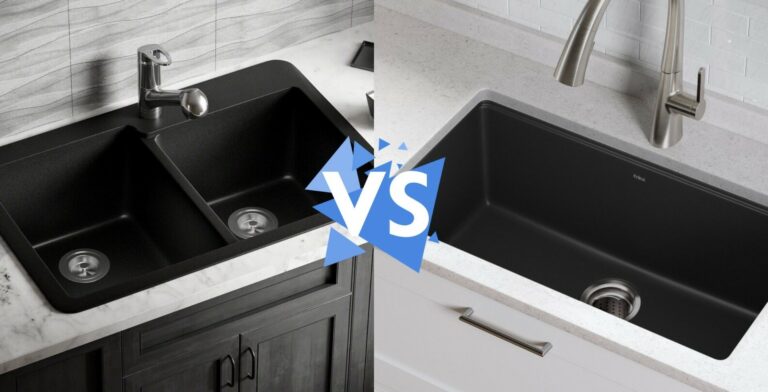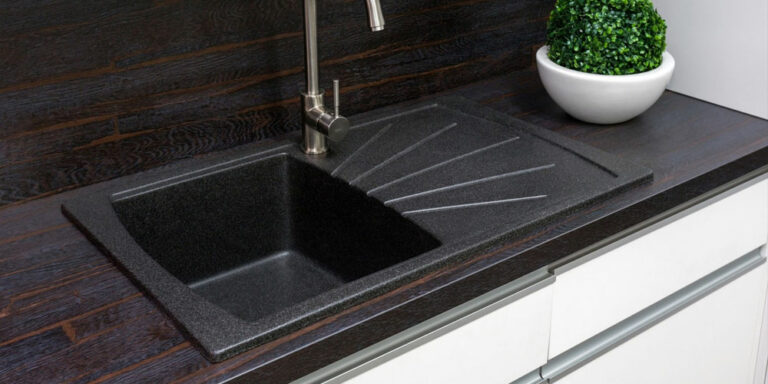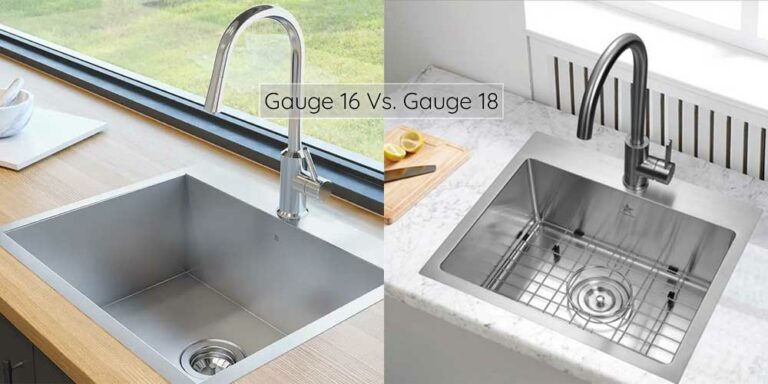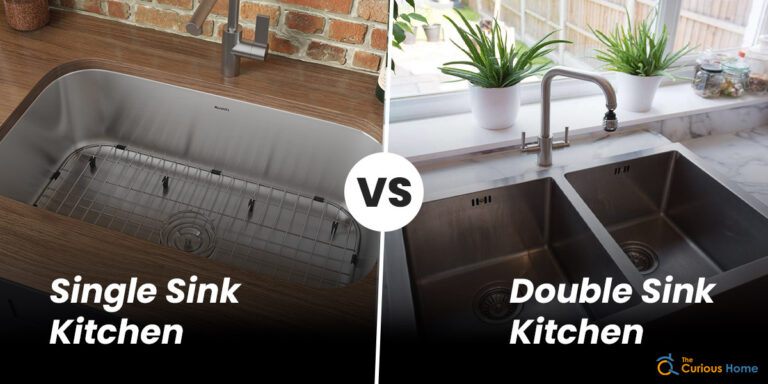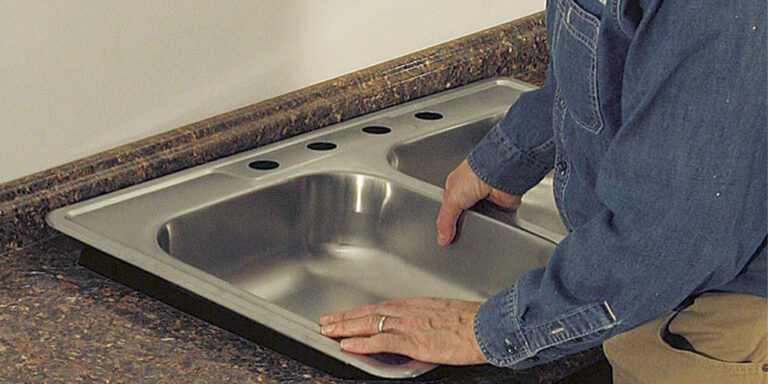How to Care for Your Copper Sink | Copper Sink Maintenance Guide
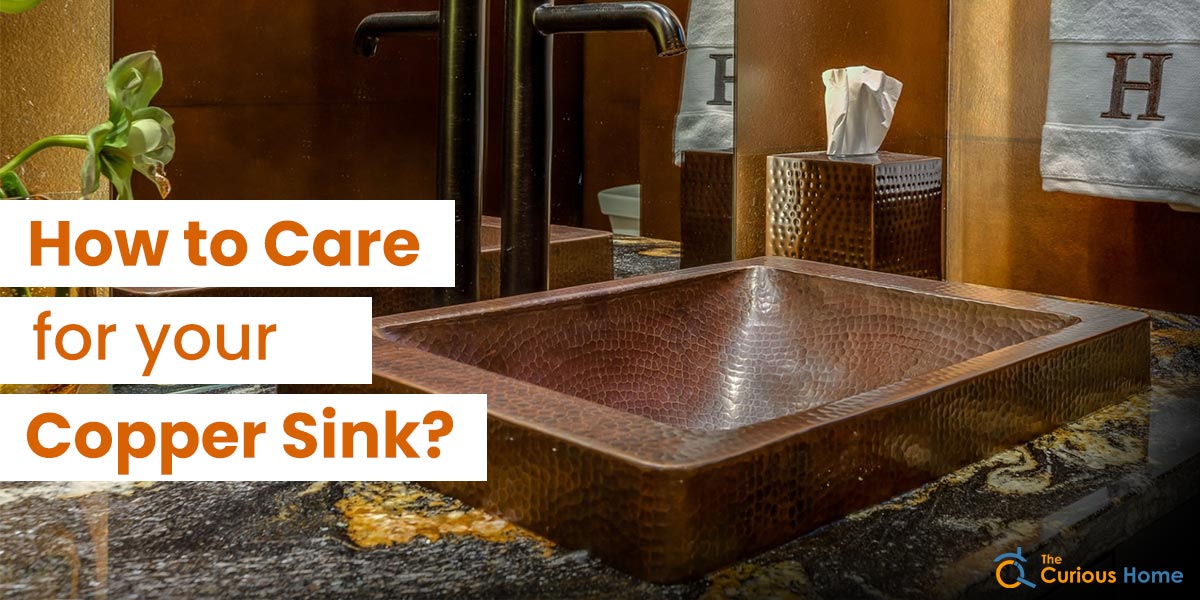
A copper sink is often thought to require a lot of upkeep and is challenging to maintain. The maintenance of a copper sink is not any more complex than that of a stainless steel or cast iron sink, despite the fact that it is quite distinctive and different.
The material used in copper sinks has some extremely special properties and is significantly different from the materials used in most sinks. In order to maintain these properties copper sinks require special care and maintenance.
In this article, we will discuss various tips and tricks for maintaining your copper sink, including how to clean it, remove stains, and maintain its shine. Whether you’re a new homeowner or a seasoned pro, this article is the perfect guide for keeping your copper sink in top condition for years to come.
Understanding Copper Sinks
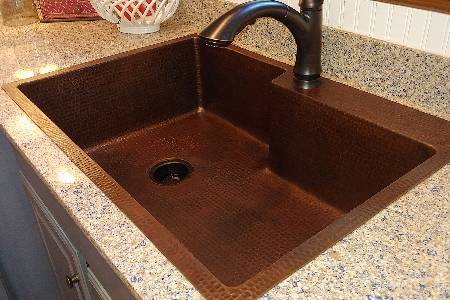
When properly maintained, copper sinks have a high degree of durability and longevity. Compared to stainless steel sinks, copper sinks are comprised of a heavier material, making them more robust.
Often, the top-rated copper sinks are purely handcrafted from copper and a little zinc for added strength. The ideal composition for a copper kitchen sink is 99% copper and 1% zinc.
Copper is first heated at a high temperature and then poured into molds to begin the process of creating a copper sink. The raw iron is formed into a sheet by the mold. This is a result of copper’s malleable nature. These sheets’ thickness and other characteristics are related to the target product’s required thickness.
The surface of the sink is coated with a procedure known as “Patina” when it’s time to give the copper sinks their final touch. Using this process, the copper sink is heated to give it its distinctive color and durability. A specific hue of the copper sink is expertly and meticulously created by the experts. Days are needed to complete the entire procedure.
Daily Cleaning And Maintenance
Warm water, light soap, and a soft cloth or sponge should be used daily to clean copper sinks. In order to remove any acidic or greasy residue that can affect the copper patina, the sink should be washed after each usage. Dry the sink after each use to avoid mineral-related spots brought on by the water supply.
Things to AVOID
When maintaining or cleaning a copper sink, stay away from the following:
- Abrasive cleaners, such as cream cleaners and scouring powders
- Using bleach as a component in products and using chlorine bleach
- Drain openers and other items with strong chemicals
- Abrasive scrub brushes, cleaning pads, and steel wool
- Especially with greasy foods and citrus or other acidic foods, avoid leaving food or dirty dishes in the kitchen sink (tomatoes and tomato products like ketchup, lemons, limes, pickled vegetables, etc.)
- Avoid leaving cosmetic and personal care product residue in the bathroom sink, such as toothpaste and shaving cream.
Steps To Clean A Copper Sink
- Step 1: To remove any dirt or residue on the sink’s surface, rinse it with hot or warm water.
- Step 2: To thoroughly clean the inside of the sink, use a dishcloth or non-abrasive sponge and some light liquid dish soap. Due to the possibility of food and beverages becoming stuck in the rim and causing finish damage, pay extra attention to this area.
- Step 3: Rinse with warm or hot water to remove any soapy residue. The sink and fixtures should then be thoroughly dried using a microfiber or cotton cloth.
Handling Discoloration And Tarnish (patina)
The fact that copper develops a distinctive patina, or pattern, over time and is thought of as a living finish is one of its outstanding qualities and one of the reasons it is so well-liked. The sink tarnishes with time, changing color through exposure to air, water, and other substances.
The patina will be removed by acid (such as orange or lemon juice exposure), but it will gradually grow again.
Your sink may eventually develop tarnishes, scratches, and dents. Although these effects won’t affect your sink’s fundamental operation, they will give it a distinctive and appealing appearance. To lessen the impact of discoloration:
- Never use scouring pads, lime or rust removers, metal (copper) cleansers, metal (copper) cleaners, alkaline, ammonia, or acidic-based chemicals or cleaning products.
- If left on the sink, acidic items like juice and ketchup can erase the patina.
- Mineral buildup and hard water stains can be challenging to remove and harm the patina.
Methods To Remove Discoloration And Tarnish From Copper Sinks
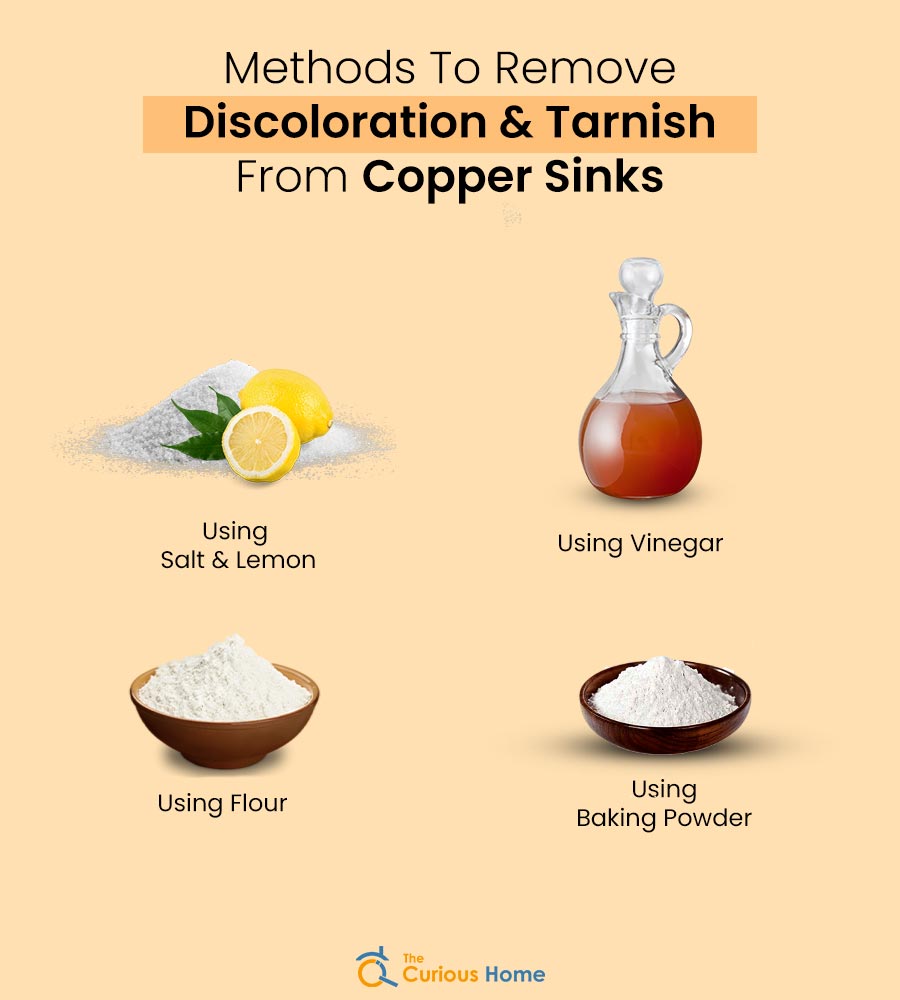
1. Using salt and lemon to clean a copper sink:
- Slice a lemon in half, then liberally salt the sliced surface with coarse kosher salt. To get rid of the tarnish, rub the cut side of a lemon on your copper cup, pot, or pan. If necessary, sprinkle the lemon with salt.
- Keep cleaning copper with salt and lemon until the tarnish is removed. Under running water, rinse the copper piece. Use a clean, dry cloth to buff the surface to polish it.
- Keep cleaning copper with salt and lemon until the tarnish is removed. Under running water, rinse the copper piece. Use a clean, dry cloth to buff the surface to polish it.
2. Use vinegar to clean copper:
- A little vinegar can be poured on the surface, or vinegar can be soaked into a cleaning sponge, then the excess liquid is squeezed off. Scrub the tarnish from the copper surface using salt sprinkled on the sponge’s rough side.
- Continue until all surfaces are spotless. After rinsing with water, polish the surface with a fresh, dry cloth.
3. Clean Copper with Flour:
- Combine one tablespoon of salt, one cup of distilled white vinegar (or more acidic lemon juice), and enough flour to make a thin paste.
- Apply the paste to the copper sink and use a cloth or scouring sponge to remove the tarnish. Polish by rinsing under running water and buffing with a dry cloth.
4. Clean Copper With Baking Powder:
Mix baking soda and a few drops of water to make a paste, then use this mixture to remove stubborn, stuck-on stains. Apply the baking soda paste with a sponge to your sink, then rinse with warm water and pat dry with a soft cloth.
Special Considerations For Copper Sinks
If your area has hard water, make sure to wipe down your copper sink and drain with a soft cloth after each usage to prevent spots. This will keep them dry and clean. Copper will be harmed by hard water in the same way that any other metal would be, and once these stains have etched the polish, they will be challenging to remove.
Applying “Renaissance Wax” on a regular basis can help keep your sink’s brilliance and improve water drainage, and it will also help protect your sink from the hard water minerals that can build up there.
Conclusion
For your home’s kitchen or bathroom, copper has the amazing capacity to be a dramatic focus point. We adore it for its distinct beauty. Maintaining the surface of your sink or tub is an important aspect of ensuring that it looks as good as new, particularly as it morphs and responds to your daily use.
Unlike other sinks, copper sinks naturally protect themselves by developing a surface known as a patina. As you use your copper sink, you’ll notice that it takes on rich, earthy tones that change over time. Without the use of harsh chemicals or time-consuming procedures, the beauty of your copper sink may endure a lifetime with the appropriate knowledge and maintenance.

